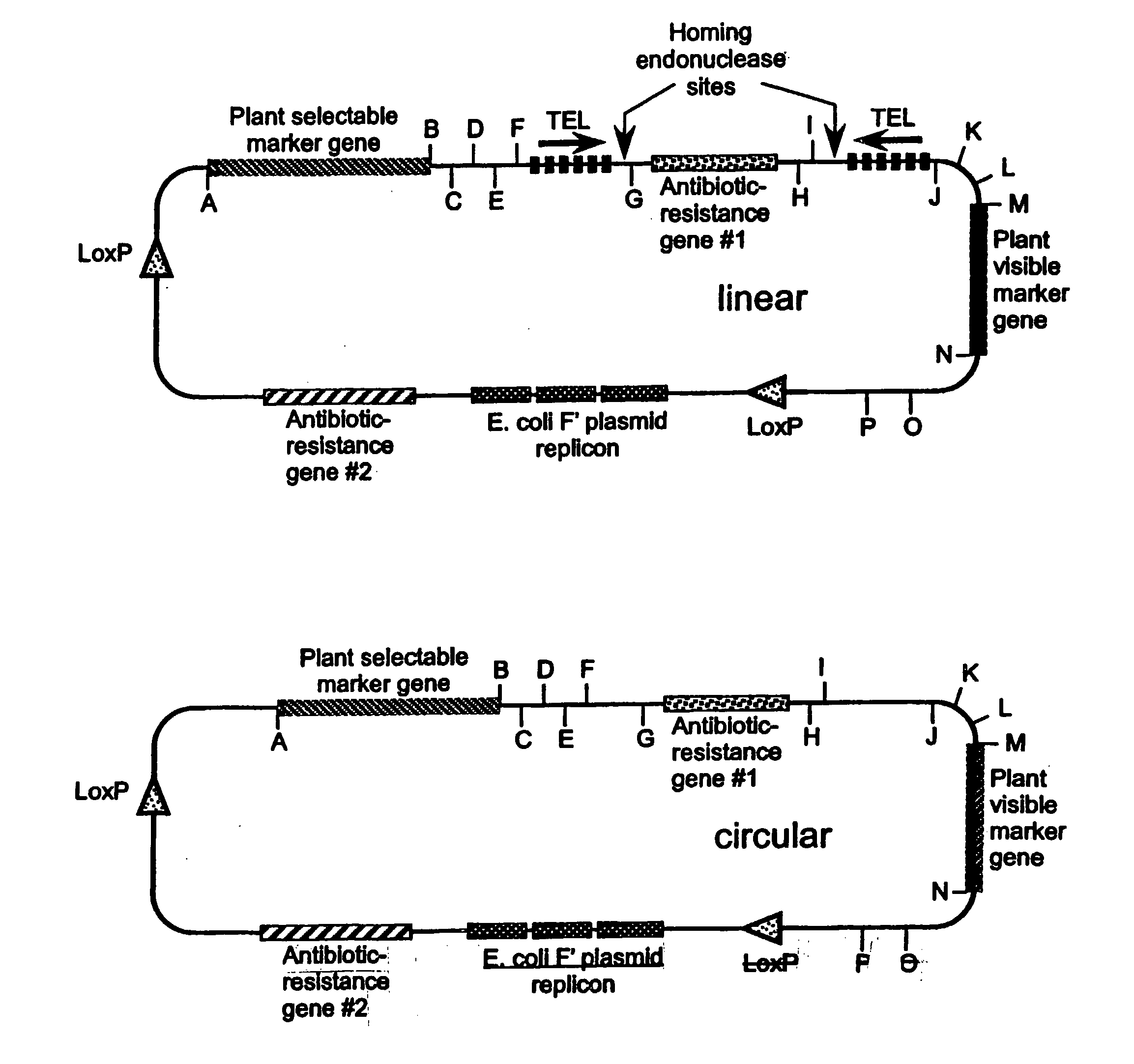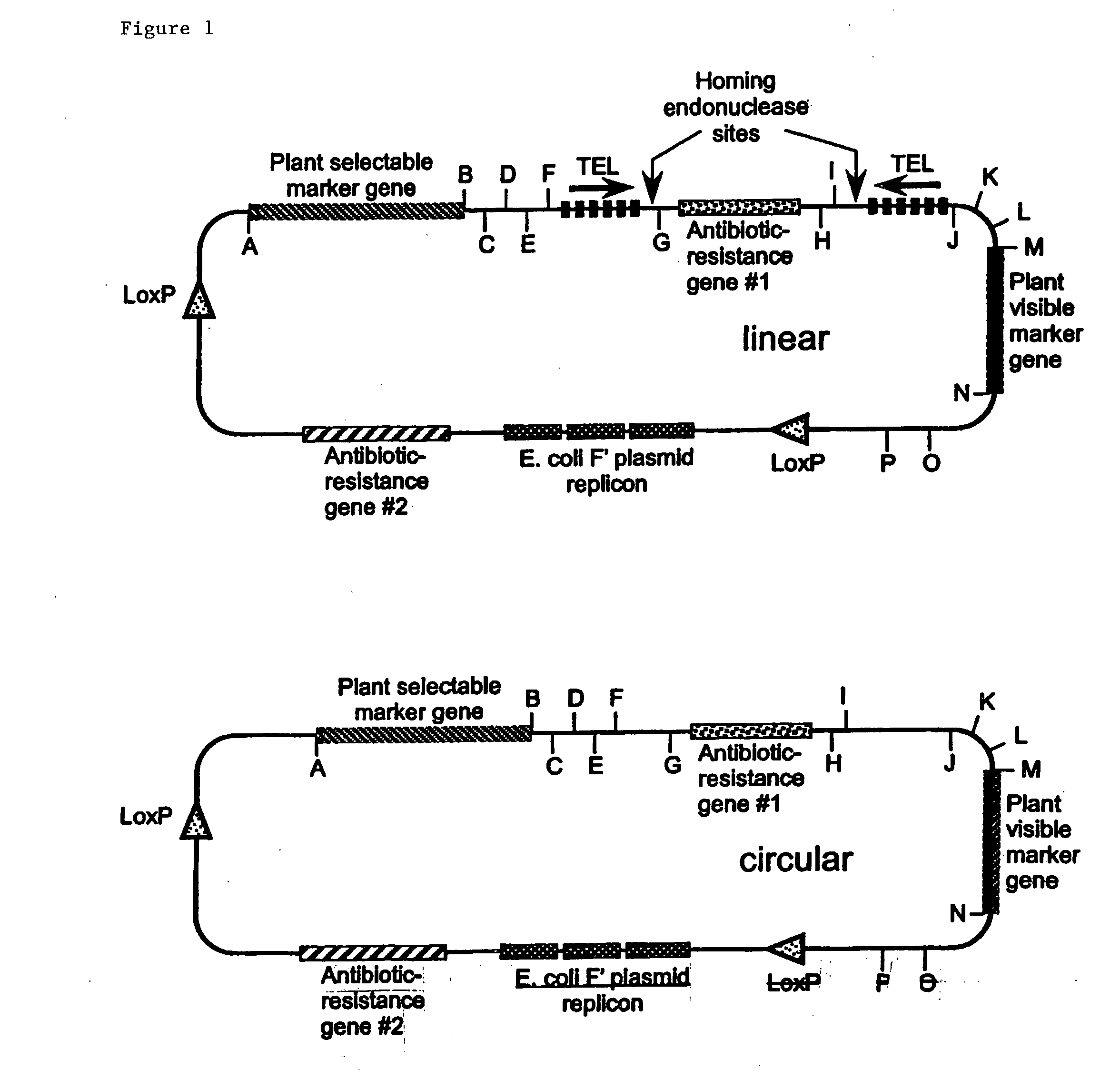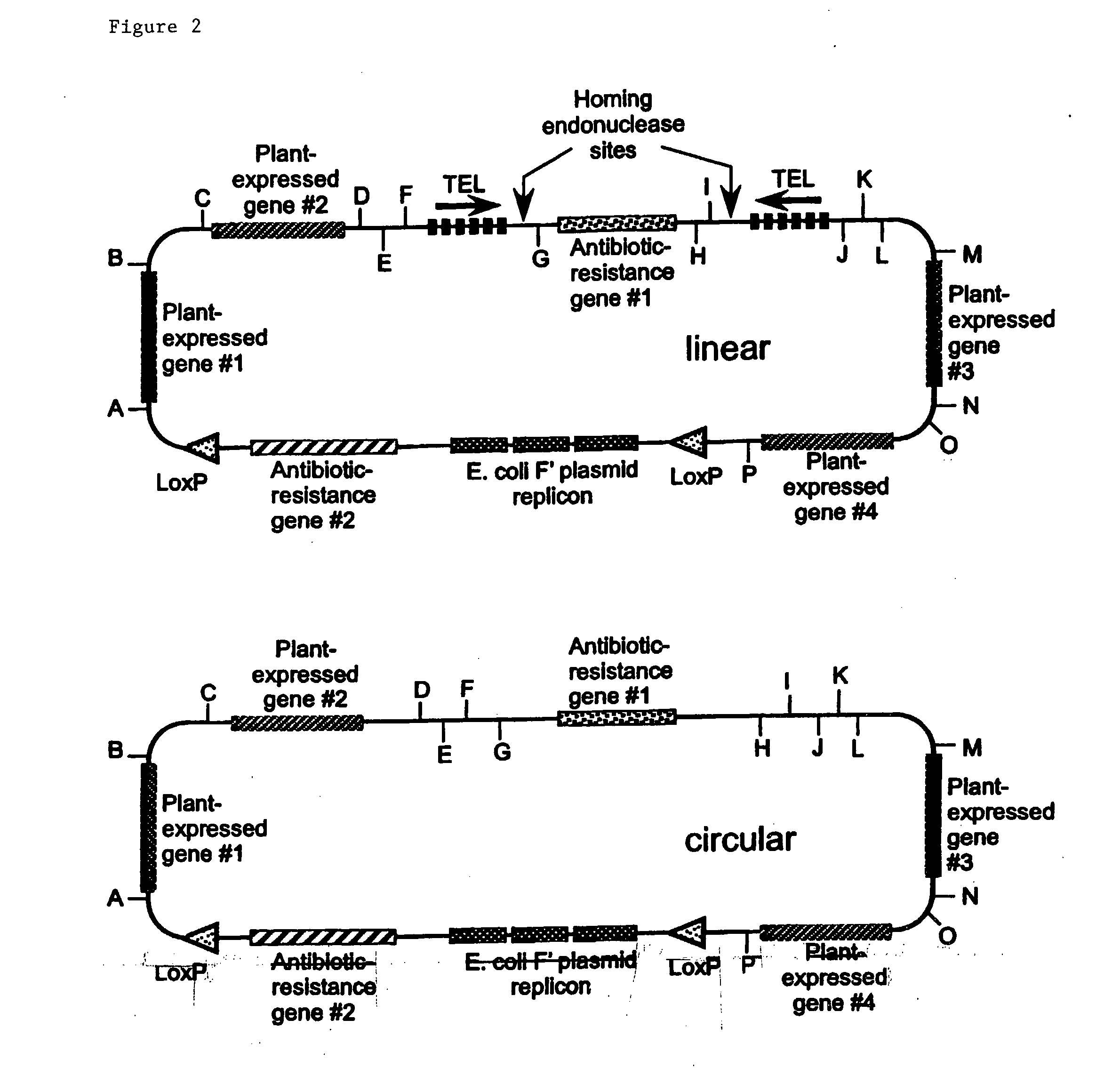Plants Modified With Mini-Chromosomes
- Summary
- Abstract
- Description
- Claims
- Application Information
AI Technical Summary
Benefits of technology
Problems solved by technology
Method used
Image
Examples
example 1
Brassica Centromere Construction
BAC Library Construction
[0327] A Bacterial Artificial Chromosome (BAC) library was constructed from Brassica genomic DNA isolated from B. oleraceae variety “Wisconsin fastplants” and digested with the restriction enzyme MboI. This enzyme was chosen because it is methylation insensitive and therefore can be used to enrich BAC libraries for centromere DNA sequences.
Probe Identification and Selection
[0328] Three groups of Brassica repetitive genomic DNA including specific centromere-localized sequences, were initially compiled as candidate probes for hybridization with the BAC libraries (Table 3). These probes represented various classes of Brassica repetitive sequences including satellite repeats (heterochromatic / centromere-specific), rDNA, and hypermethylated DNA fractions.
[0329] Four probes were picked to interrogate the BAC libraries. These probes represented different groups of commonly found repetitive sequences in the Brassica genome. The p...
example 2
Assembly and Components of Brassica Mini-Chromosomes
[0341] Two methods have been developed to construct plant mini-chromosomes. The first method relies on cre / lox recombination in which a bacterial mini-chromosome (BAC) vector containing plant centromeric DNA and a loxP recombination site is recombined, by the action of cre recombinase, with a donor vector carrying plant gene expression cassettes to generate a plant mini-chromosome. The second method uses restriction enzyme digestion and ligation to produce two DNA fragments with compatible cohesive ends: 1) a vector fragment containing plant gene expression cassettes and ii) a centromere fragment. The two fragments are ligated into a circular structure to form a plant mini-chromosomes.
[0342] The components of the Brassica mini-chromosomes include fluorescent reporter genes, a selectable maker gene, a Brassica centromere sequence identified in a Brassica BAC library, a telomere sequence, a cloning vector and a donor vector. These ...
example 3
Mini-Chromosome Delivery into Brassica Cells
[0387] Various methods may be used to deliver DNA into plant cells. These include biological methods, such as Agrobacterium and viruses, physical methods such as biolistic particle bombardment and silicon carbide whiskers, electrical methods such as electroporation, and chemical methods such as the use of poly-ethylene glycol and other compounds known to stimulate DNA uptake into cells. Agrobacterium and biolistic particle bombardment have been the methods that have found most widespread use in plant biotechnology. See, e.g., Broothaerts, et. al. Nature 433: 629-633, 2005.
Biolistic Particle Delivery of Mini-Chromosomes
[0388] A biolistic delivery method using wet gold particles kept in an aqueous DNA suspension was adapted from the teachings of Milahe and Miller (Biotechniques 16: 924-931, 1994) and used to transform B. oleracea (Broccoli) cells. To prepare the wet gold particles for bombardment, 1.0 μm gold particles were washed by mix...
PUM
| Property | Measurement | Unit |
|---|---|---|
| Efficiency | aaaaa | aaaaa |
| Efficiency | aaaaa | aaaaa |
| Efficiency | aaaaa | aaaaa |
Abstract
Description
Claims
Application Information
 Login to View More
Login to View More - R&D
- Intellectual Property
- Life Sciences
- Materials
- Tech Scout
- Unparalleled Data Quality
- Higher Quality Content
- 60% Fewer Hallucinations
Browse by: Latest US Patents, China's latest patents, Technical Efficacy Thesaurus, Application Domain, Technology Topic, Popular Technical Reports.
© 2025 PatSnap. All rights reserved.Legal|Privacy policy|Modern Slavery Act Transparency Statement|Sitemap|About US| Contact US: help@patsnap.com



